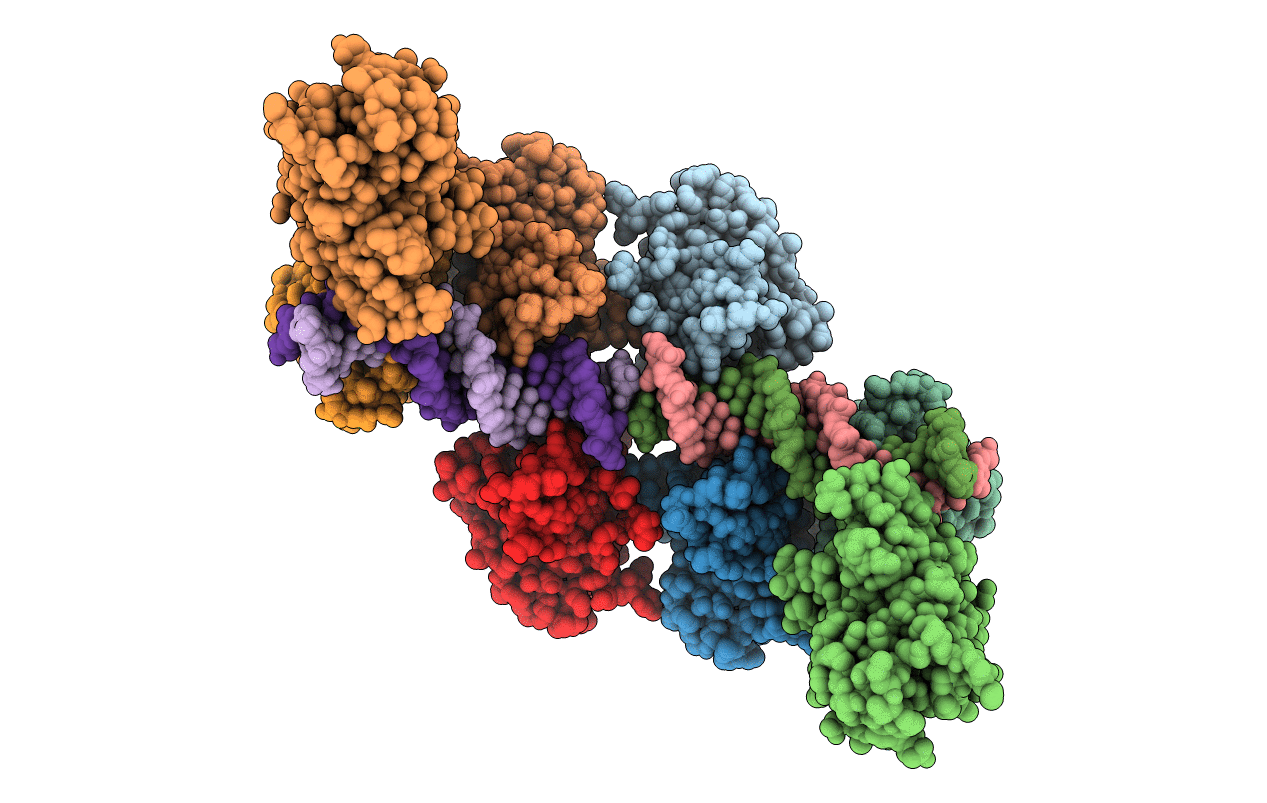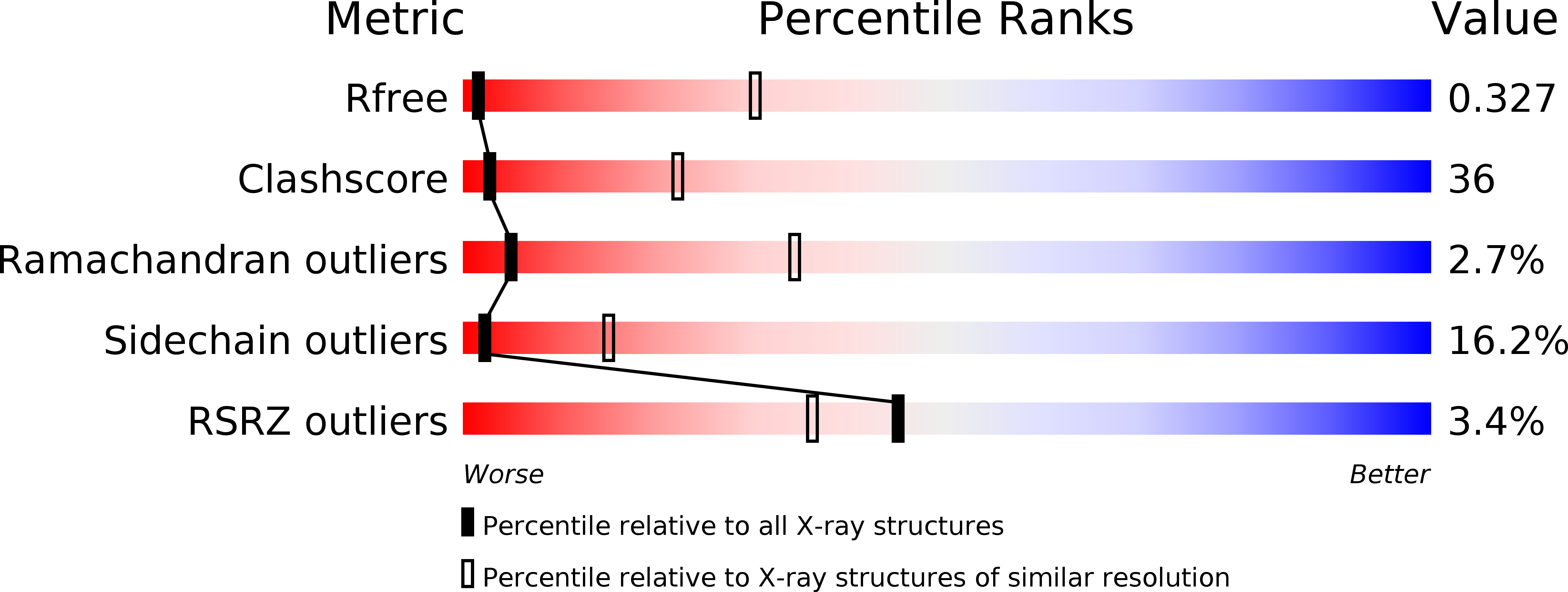
Deposition Date
2011-11-22
Release Date
2012-02-01
Last Version Date
2024-02-28
Entry Detail
PDB ID:
3US2
Keywords:
Title:
Structure of p63 DNA Binding Domain in Complex with a 19 Base Pair A/T Rich Response Element Containing Two Half Sites with a Single Base Pair Overlap
Biological Source:
Source Organism:
Homo sapiens (Taxon ID: 9606)
Host Organism:
Method Details:
Experimental Method:
Resolution:
4.20 Å
R-Value Free:
0.33
R-Value Work:
0.32
R-Value Observed:
0.34
Space Group:
C 1 2 1


